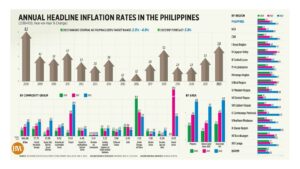Public-Private Partnerships: Unmasking the reality

(Part 1)
PUBLIC-PRIVATE Partnerships (PPPs) are long-term contractual arrangements where the private sector provides (builds and sometimes runs) infrastructure assets and services that have traditionally been directly funded by government, such as hospitals, schools, prisons, roads, bridges, tunnels, railways, and water and sanitation plants, and where there is also some form of risk sharing between the public and the private sector. These arrangements started in the 1990s in developed countries and now many developing countries are trying them.
This article is divided into two parts. In the first one, we scrutinize the arguments to justify these contractual arrangements, and the available evidence about their proclaimed benefits. We will discuss Philippine PPPs in the second part.
PPP advocates claim that these arrangements bring financing, efficiency, and innovation. They argue that by using private sector resources and expertise, PPPs have the potential to improve the quantity and quality of service delivery, thus creating better “value for money,” compared to traditional public procurement. These arrangements have increasingly been advertised as the magic solution to the many problems that developing countries face when building infrastructure. The argument also includes the questionable claim that the private sector is more efficient and better able to deliver public services, including energy, education, health, water and sanitation. Certainly, the private sector publicizes these arguments as PPPs open new business areas for some companies.
On these grounds, PPPs have become popular in developing countries, where people have been led to believe that their governments cannot undertake certain infrastructure projects because they do not have the capabilities (poor management and delivery) or because they lack the financial resources.
We read recently a report by the European Public Service Union and the European Network on Debt and Development that summarizes impeccably well the pitfalls of PPPs (PPPs_EN.pdf, nationbuilder.com).
Before getting into the pitfalls, it is important to further elaborate on why developing countries are buying into PPPs — they are bombarded. One reason is that international financial institutions (IFIs) are cheerleaders of these arrangements. Yet, PPPs are poor development advice with a clear political motivation: the privatization of public services. Their advice also comes from the perennial mantra that PPPs address the limited funding resources for local infrastructure or development projects of the public sector. However, sovereign governments like that of the Philippines do not have limited funding resources because these are set in the Peso, the national currency.
Also, developing countries have been duped and led to subscribe to the Sustainable Development Goals (SDGs) of the United Nations’ Agenda 2030. This agenda has set targets for the developing countries in key areas such as infrastructure, health, education, water and sanitation, and gender equality, among others. Developing countries have been told that PPPs are needed to attain them. The problem with the SDGs is that they are no more than a long list of 250 targets that does not amount to development.
Likewise, the Paris Climate agreement requires urgent and immediate action to mitigate and adapt to climate change, particularly in areas such as infrastructure, food systems, and energy. Again, the private sector appears to be the solution.
Finally, the outbreak of COVID-19 has revealed the depth of the inequalities within and between countries, as the crisis induced by the pandemic takes its heaviest toll on the marginalized and most vulnerable communities. Governments across the globe agree about the need for massive investment. This is used as a fourth argument to justify PPPs.
As noted above, PPPs are supposed to solve financial constraints, poor management and delivery (know-how), in developing countries. The know-how problem might be true in very poor countries but this is a problem of both the public and the private sectors. If lack of Government know-how is a problem in a middle-income country like the Philippines (is it really?), the solution should be to expedite learning by the government to acquire the necessary capabilities to design and manage these projects, especially in areas such as education and health, which are the cornerstones of society’s equality.
The financial constraint is an altogether different story. Many governments and international institutions argue that public resources and institutions have to be used to attract private finance to fill a perceived “financing gap.” They have actively promoted PPPs all over the world. We said above that the problem with this argument is that a sovereign government (like that of the Philippines) that uses its own currency cannot have a financing gap.
The report we cite is based on the European experience. It provides plenty of evidence that questions the alleged benefits of PPPs. It draws on case studies across Europe that show that PPPs are proving to be poor value for money. This should be a warning sign for developing countries.
The report outlines the following reasons to question PPPs:
1. PPPs do not bring new money. In a PPP, the public sector does not take a loan to pay for a project. Instead, the private sector arranges the financing and builds the infrastructure. Then the public sector pays a set fee over the lifetime of the PPP contract (at times, users also pay part or all of the fee directly to the private sector company). Therefore, while PPPs might appear to raise new funds due to the private sector taking loans instead of the government, the funding for the project still comes from government budgets and/or end users. This is not noticed because PPP projects are usually recorded off the government’s balance sheet, so they do not (misleadingly) impact on debt figures. Therefore, they create hidden debt.
2. Private finance costs more than government borrowing. The cost of private finance is higher than that of public borrowing. Both the OECD and IMF have warned that governments can nearly always raise capital at a lower cost than the private sector.
3. Public authorities still bear the ultimate risk of project failure. Proponents of PPPs argue that they are able to transfer project risks from the public to the private sector. However, public authorities still bear the ultimate risk of project failure. IFIs advise governments to guarantee profits for their private partners and urge governments to “de-risk” commercial providers to attract their investments.
4. There is a triad of bogus arguments often mentioned to support PPPs, namely that they offer better value for money, that they bring efficiency gains, and that they are transparent. The reality is that PPPs don’t guarantee better value for money, that efficiency gains and design innovation can result in corner-cutting, and that PPP deals are opaque and can contribute to corruption.
PPPs have rarely delivered better “value for money” than reasonably managed public projects. Likewise, PPP promoters argue that private sector companies introduce efficiency in the delivery of infrastructure and public services. Efficiency gains can come from improvements in design, construction, and operations. Yet, the theory is ambiguous and the empirical evidence is mixed. If there have been any efficiency gains, these have resulted from risky cost-cutting and a decline in service quality, e.g., in public infrastructure or healthcare provision. Also, many PPP deals are opaque and can contribute to corruption. Private companies often insist that many aspects of PPPs be kept secret, usually including the contracts themselves.
5. PPPs do not guarantee projects being on time or on budget. There is a general belief that private sector companies are better than the public sector at delivering projects on time and on budget. However, the evidence does not support this claim.
6. PPPs distort public policy priorities and force publicly run services to cut costs. PPPs have to be commercially viable, or private companies will not take part in them. This distorts policy decisions: some projects are not selected because they are not commercially viable; others are selected because they appear to be commercially viable; and some are adjusted to make them more attractive to the private sector, even if this means a decrease in the level of service.
This summary shows that PPPs come at a high cost and have not delivered the expected benefits. For this reason, developing countries ought to rethink the idea altogether. At least, government officials of developing countries need capacity-building to better manage PPPs, as well as the development of standardized contracts or other tools to help these contracts work more smoothly.
The Report makes two recommendations that we share: (i) halt PPPs in the social sectors, including health, education, and water; and, (ii) increase public investment in public services, to be financed by progressive taxation. This is the only way for citizens to get access to the high-quality and universal public services they deserve. Having said this, we acknowledge that there might be room for the private sector to be involved in some public-sector projects but only when indeed there is a clear rationale for it, and avoiding the pitfalls we discussed above.
(To be continued.)
Jesus Felipe is a distinguished professor of Economics at De La Salle University. Pedro Pascual is a board-certified economist with Spain’s Ministry of Economy, and a partner at MC Spencer (Philippines).




